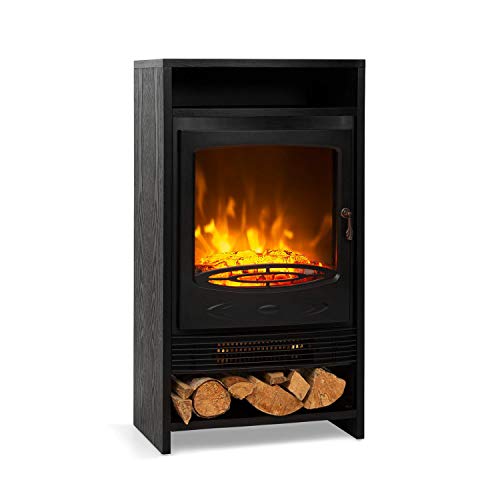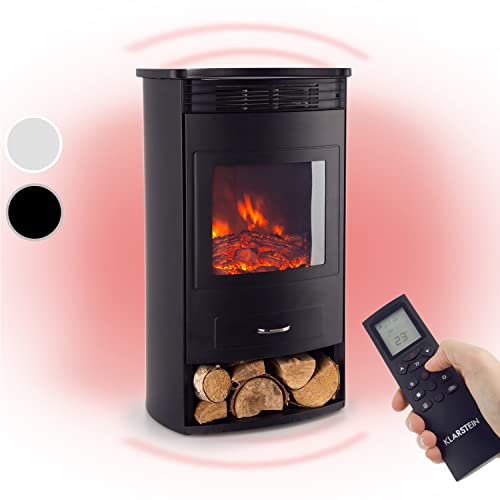15 Gifts For The Fireplace Surround Lover In Your Life
Donte
0
5
09.22 07:02
 Choosing a Fireplace Surround
Choosing a Fireplace Surround If you are using a fireplace to provide aesthetics or warmth, the right surround can give your living space a unique. But choosing a fireplace surround that complies with the requirements of code and is safe could be a difficult task.
If you are using a fireplace to provide aesthetics or warmth, the right surround can give your living space a unique. But choosing a fireplace surround that complies with the requirements of code and is safe could be a difficult task.Fortunately, these custom surrounds are constructed using non-combustible materials that adhere to the National Fire Code. They look fantastic in any style of home.
Simple Concrete Surround with Marble Slabs
A fireplace surround can be a focal point in a room and it can bring warmth and elegance. It can be made from many different materials and crafted to match different styles of design. It is important to think about the design of the room and the budget before deciding on the style of the fireplace surround.
Marble fireplace surrounds are a sophisticated option that can be paired with a wide range of design styles. They can be paired with rustic woods and modern metals to create an unique, contemporary design. Marble is fairly easy to maintain and can withstand high temperatures, electric firesuite (please click the following internet page) making it a perfect material for fireplace surrounds.
Stone is an elegant fireplace surround material that has a timeless appeal and works in many homes. It can be carved and etched to give it a more contemporary look or left untouched for a more traditional appearance. Stacked stone veneers are another popular option to add texture and depth to the interior of a room.
Granite is a popular choice for modern fireplace surrounds due to the fact that it is durable and able to heat very well. It is available in a variety of colors and patterns making it possible to create a variety of design styles. Quartzite can also be made into a shape and molded to fit an upscale surround.
The installation of a concrete surround for a fireplace might be feasible for DIYers. This task may seem daunting, but it can be much easier than you think when you collaborate with an expert and plan ahead.
A professional is also recommended when creating a marble fireplace surround, as it requires special attention to avoid damage. A skilled carpenter will help you avoid mistakes that could cost you thousands of dollars in repairs.
If you're planning on using tile for your fireplace surround, be sure it's suitable for high-temperature uses. This information is usually located on the packaging, or you can ask a staff member at a home improvement shop.
Leaning Frame Surround
The fireplace's surround can transform a room. It's not just visually appealing, but also serves a practical purpose. It protects the wall that surrounds the fireplace from damage and also reflects heat back into the room. It's available in various materials and can be customised to suit any style or design.
The right material is crucial to achieving a deliberate aesthetic. Concrete is a great choice because it's durable, non-flammable, and has a lot visual appeal due to its natural texture and colour. It is typically poured in molds that allow you to choose the option of creating an original shape.
When you design your leaning frame, make sure to add in layers. This makes the piece appear more planned rather than randomly placed. If you plan to display heavy objects like lamps or vases on leaning frames, place a piece of rubber drawer lining under the base. This will stop them from sliding and damaging surfaces.
If you're using a concrete or marble surround, you might want to consider putting an oak board at the bottom to hold it in place. It will also help in reducing the weight of the item and prevent it from shifting while you sip a refreshing glass of wine or coffee in front of your mantel.
After you've selected the material for your frame's leaning frame, it's time to start making the actual piece. Mark the wall with the dimensions of your surround. Then with a saw, cut cleats along each mark. Make sure that the cleat on the top of the shelf is at least a foot shorter.
Then, attach the brackets onto the wall. Make sure that the bolts go through the backerboard and into the stud. The pre-drilling of the screw holes is required if you need to. After that, temporarily clamp the mantel to the backer board. Fix the mantel to studs using the lag bolts (2-4 bolts per stud). Make sure that the bolts are sufficient to cover 2/3 of the mantel depth + the thickness of the backer board.
Black Firebox Surround
Fireplace surrounds serve a practical and decorative role. They protect walls from damage caused by heat and also help to redirect some of the heat back into the room, and can make a fireplace a focal point in a space. Metal and wood are the most common materials used for fireplace surrounds. Metal surrounds may be required by building codes to safeguard nearby combustible areas or they may simply enhance the aesthetic of a fireplace to make it look more attractive.
The fireplace in this contemporary living space has a black firebox surround with white marble accents. The stone is a premium material that requires more care than a mantel made of wood, however it adds a dramatic and striking design element to the space. The black finish also brings with the dark tones of the furniture and the wood flooring to create a seamless appearance.
Concrete isn't just for sidewalks and driveways. It's also a versatile and attractive material that can be used to surround fireplaces. It can be cut into a variety of shapes and then poured in place, allowing for almost endless designs. This concrete surround was shaped to a curved profile. It has a sleek and modern look that contrasts the darker shades of the brick wall and floor.
Another popular material for fireplace surrounds is wooden, that is available in a variety of textures and colors that complement any decor scheme. Wooden surrounds can be finished in any shade to match your hearth pad. They are lighter and cheaper than the masonry surrounds. Most wooden surrounds can accommodate household decor above the mantel including lamps and vases.
Certain wood surrounds come with a faceplate which covers the top of the mantel and houses the fireplace doors. The faceplate can be attached to the mantel using hinges or decorative fasteners which resemble the appearance of iron.
When choosing a mantel made of wood or a fireplace surround made of metal, it is important to take into consideration the height of your chimney. Building codes require minimum clearance distances to prevent a ethonal fire from spreading into the home. The distance will vary based on the kind of fireplace you have and also from state state or country to country.
Simple Wood Surround
There are many options available for surrounds if you wish to give your fireplace a traditional style. Some surrounds are made of solid oak while others are an assortment of materials, including stone legs that are paired with oak or pine mantels. There are also pine or oak fire surrounds designed to be a low-cost and easy alternative.
A lot of people choose to purchase a pre-made wood fireplace surround as this is an inexpensive method of getting the look that they want without the expense of the services of a carpenter. Some pre-made pine fireplace suite surrounds come in a variety of finishes to match it to your existing decor.
A hand-crafted wood fire surround made of high-quality oak is also popular. It can be stained to the light oak color or left untreated to allow the natural golden brown of the wood to show through. The fireplace surround can be used with gas or wood fireplaces. It comes in two different styles: flat or arched.
There are many tutorials available online for those who have more experience in DIY home improvement projects. They can assist you in making your own fireplace surround from wood. One example is this thorough step-by-step guide by H2O Bungalow that teaches you how to create a rustic inspired wood surround using pine.
The tutorial will show you how to construct the horizontal portion of the fireplace surround first, and then how to build the vertical pilasters or columns that support the mantel. Once these are completed you can put in the mantel. The guide will show you how to put up the crown molding, which will fill in any gaps between the wall's cladding and the wall that surrounds it.
Since a fireplace surround made of wood is constructed from combustible material it is crucial that you adhere to your local fire code and keep it 6 inches from the edge of the chimney opening. It is also essential to use a non-flammable glue to join the decorative molding, and to ensure that it remains in place when the surround is set.
